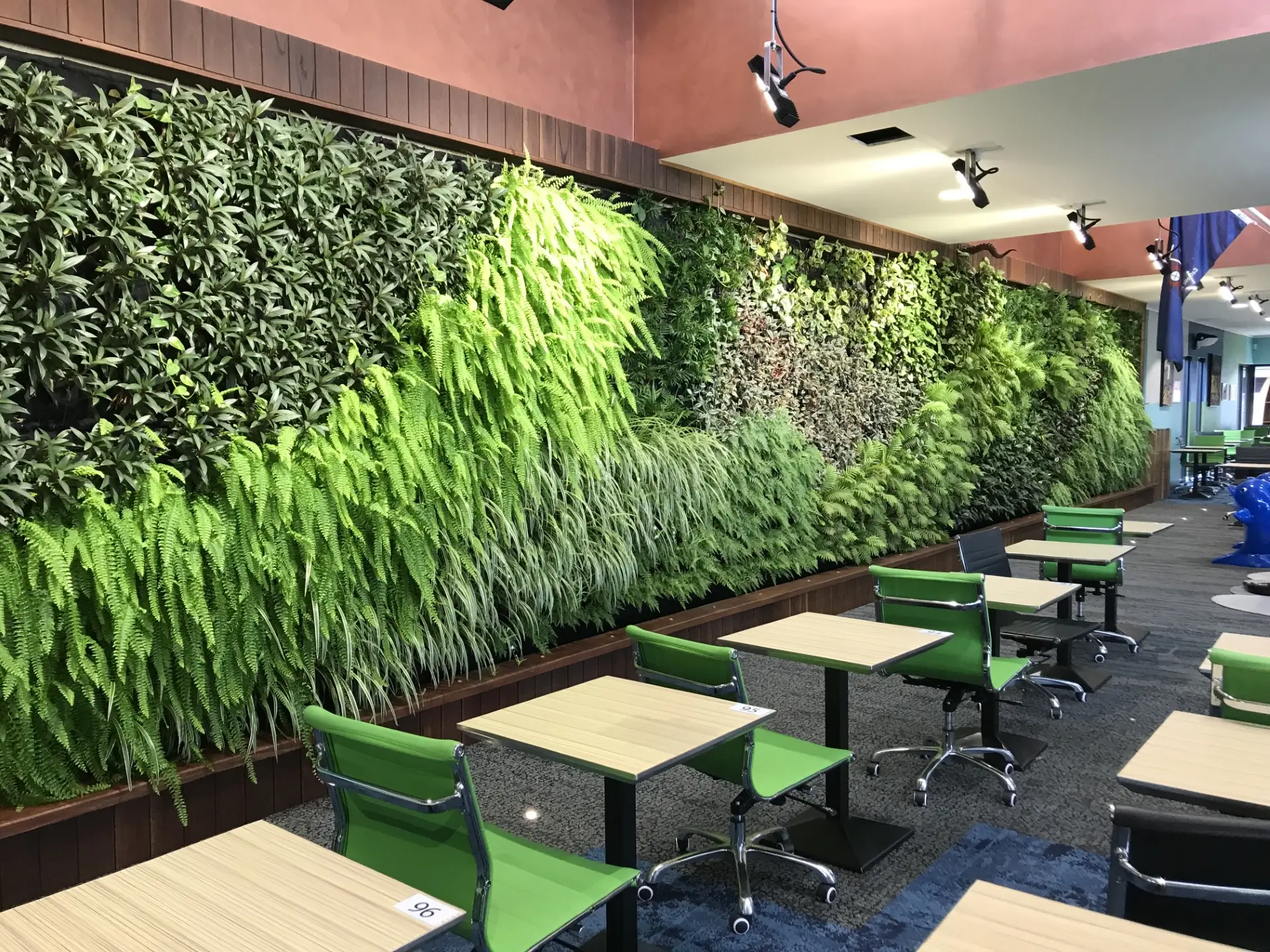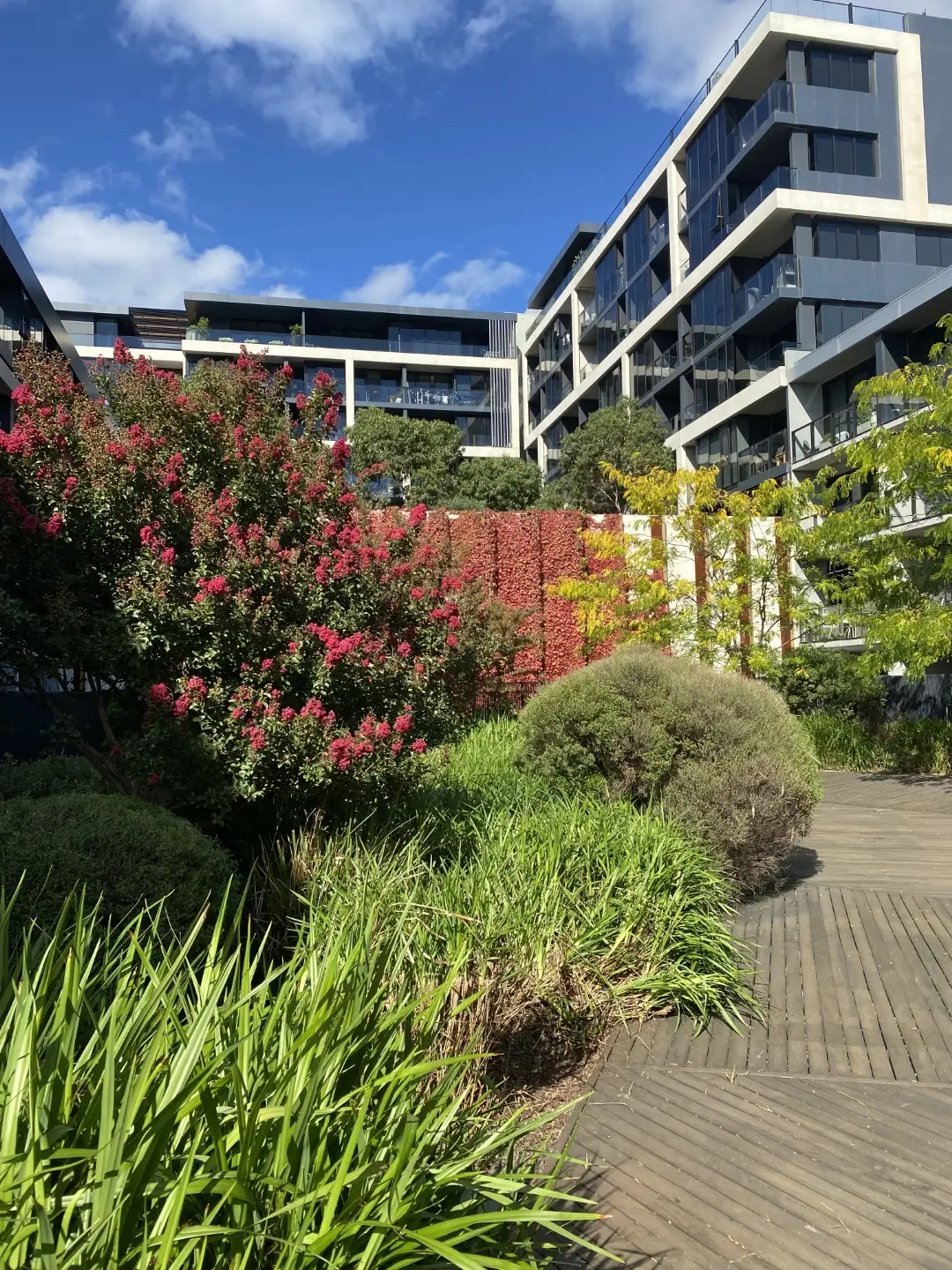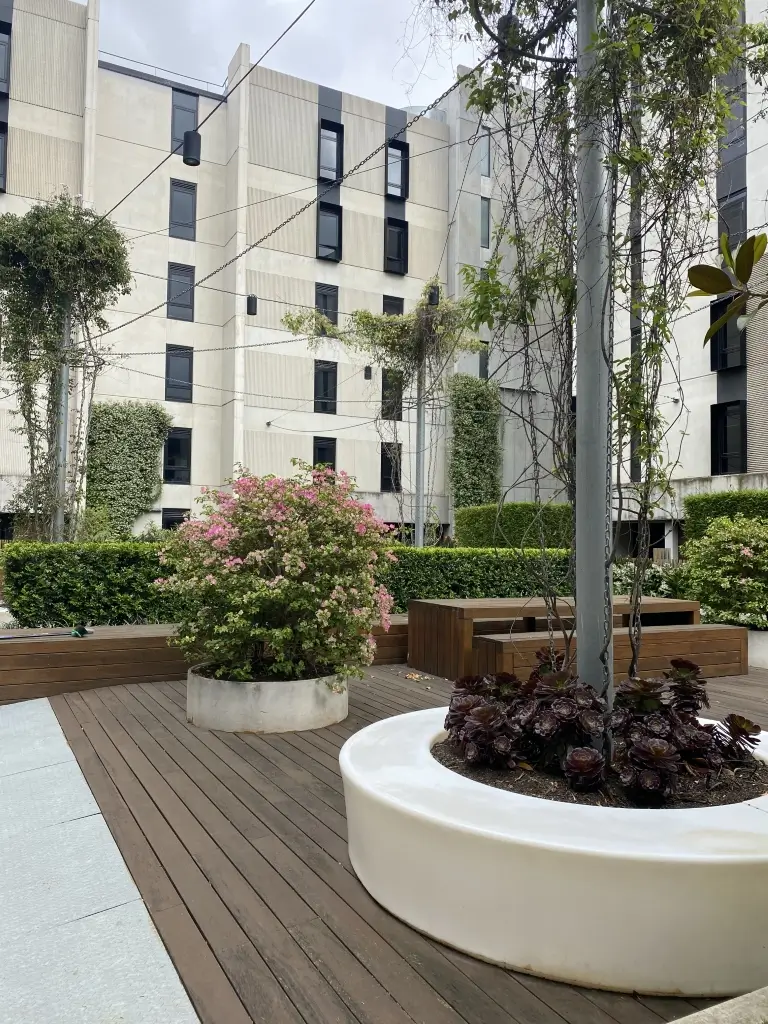Green Open Spaces
Enhance your indoor or outdoor space with expertly designed urban greenery. Evergreen Infrastructure transforms spaces in Melbourne with lush, sustainable, restorative green elements.






.webp)


In the bustling tapestry of urban landscapes, Evergreen Infrastructure excels in crafting sustainable havens.
Their expertise spans Water Sensitive Urban Design (WSUD), ensuring resilient water management amidst urban areas, multi-residential developments, streetscape design, and public open spaces.
They manage various forms of landscape features such as planters, landscapes on structures, and open space management, weaving together vibrant, ecological environments that thrive in the heart of the city.
The Benefits
Breathe Easier, Live Healthier
Plants naturally improve air quality, reducing pollutants and contributing to a healthier indoor environment.
Boost Mood and Productivity
Studies show that exposure to greenery reduces stress, enhances focus, and improves overall wellbeing.
Increase Rents and Yields
Adding green spaces strategically enhances the perceived value of your property. Studies show that tenants and buyers are willing to pay more for access to nature and well-designed green elements.
Projects
Features
Tailored Greening Solutions
We offer a range of options, from potted plants and planter displays to multiresidential and public space design and custom green installations.
Indoor and Outdoor Design Expertise
We assess your space, light conditions, and needs to select the perfect plants and designs for both interior and exterior environments.
Plant Selection for Success
We choose plants based on resilience, suitability for your space, and your desired visual effect.
Placement for Maximum Impact
Our designs consider both aesthetics and functionality, ensuring your green elements create the desired ambiance.
Installation and Maintenance Options
We can deliver ready-to-display greenery or handle full installation, along with ongoing maintenance packages.
Biophilic Design Principles
We incorporate the latest biophilic design research to integrate nature seamlessly into your space for maximum benefit.
FAQs
Residential green open spaces include gardens, lawns, courtyards, and communal parks within residential areas. These spaces provide aesthetic value, recreational opportunities, and environmental benefits, contributing to the overall well-being and quality of life for residents.
Commercial green open spaces are landscaped areas around commercial properties, such as office buildings, shopping centers, and business parks. These spaces enhance the aesthetic appeal of the property, offer recreational areas for employees and visitors, and contribute to environmental sustainability.
Residential green open spaces offer numerous benefits, including improved mental and physical health, increased property values, enhanced community cohesion, and environmental benefits such as improved air quality and reduced urban heat. They provide residents with places to relax, play, and connect with nature.
Commercial green open spaces benefit businesses by creating a pleasant and inviting environment for employees, clients, and customers. They can improve employee well-being and productivity, attract customers, and enhance the corporate image. Green spaces also contribute to sustainability goals and can provide energy savings through natural cooling.
Maintaining residential green open spaces involves regular activities such as mowing, watering, fertilising, pruning, pest control and specialised horticultural knowledge. It is essential to choose plants suited to the environment, implement sustainable landscaping practices, and engage community members in the upkeep to ensure the spaces remain attractive and functional.
Design considerations for commercial green open spaces include accessibility, aesthetics, functionality, and sustainability. The design should cater to the needs of users, provide areas for relaxation and social interaction, incorporate native and drought-tolerant plants, and include features such as seating, walkways, and shade structures.
Yes, green open spaces can increase property value. Well-maintained green spaces enhance the visual appeal of residential and commercial properties, making them more attractive to potential buyers or tenants. They also contribute to a higher quality of life, which can lead to increased demand and higher property prices.
Green open spaces in commercial areas contribute to sustainability by reducing energy consumption, managing stormwater runoff, improving air quality, and providing habitats for wildlife. They can also support sustainable practices such as recycling, composting, and the use of renewable energy sources.
Green open spaces play a crucial role in community building by providing areas for social interaction, events, and recreational activities. They foster a sense of community, encourage outdoor activities, and offer a shared space where residents and employees can connect, relax, and enjoy nature.
Green open spaces can be made more inclusive by designing them to accommodate people of all ages, abilities, and backgrounds. This includes providing accessible pathways, diverse recreational facilities, seating areas, and inclusive play equipment. Community involvement in the planning and design process ensures that the spaces meet the needs of all users.
Urban green open spaces face challenges such as limited land availability, funding constraints, pollution, vandalism, and climate change impacts. Effective planning, community engagement, and innovative design solutions are essential to overcoming these obstacles and ensuring the sustainability of green spaces.
Creating green oases in urban settings
Talk to us%20(1).webp)
.webp)
.webp)
